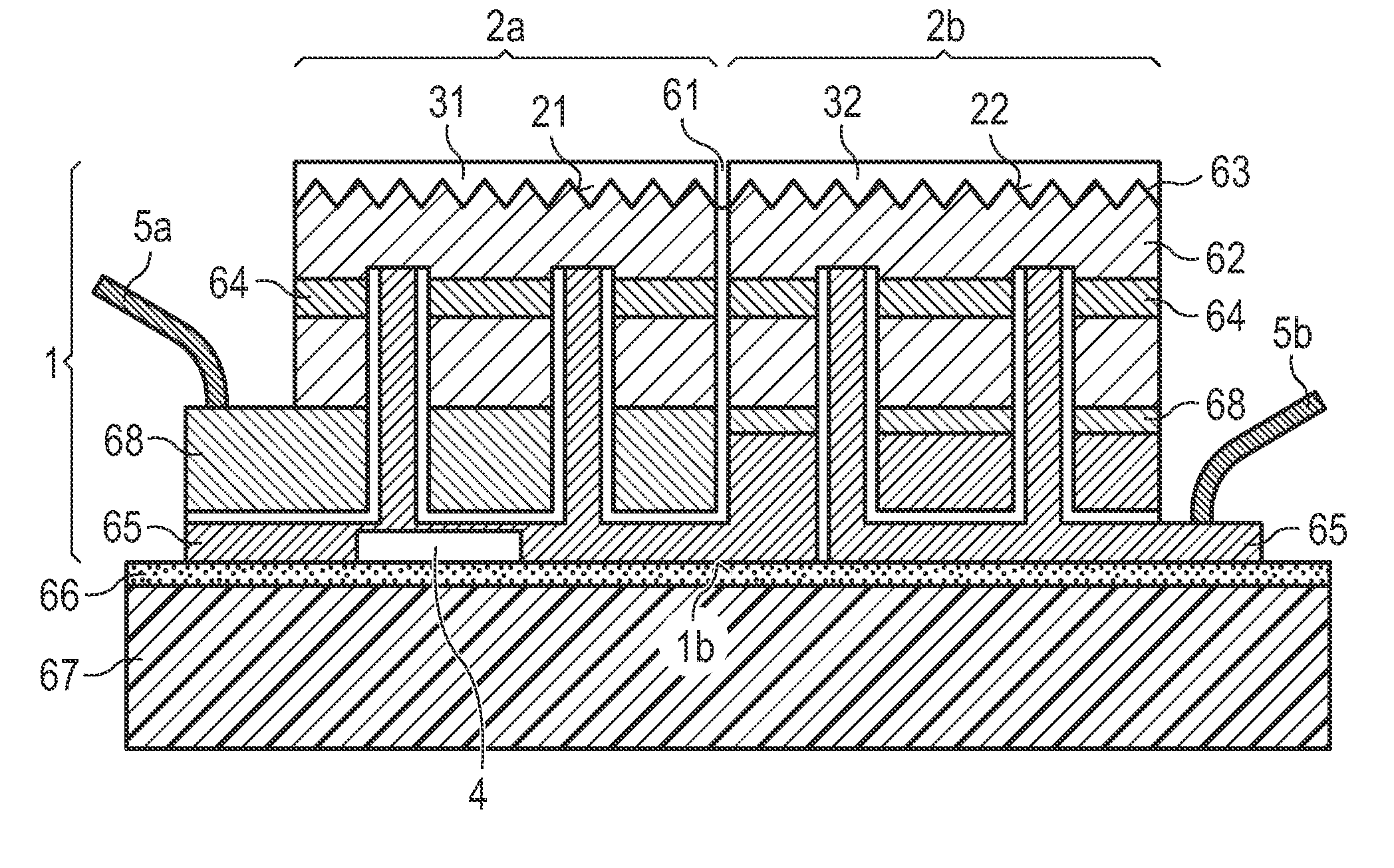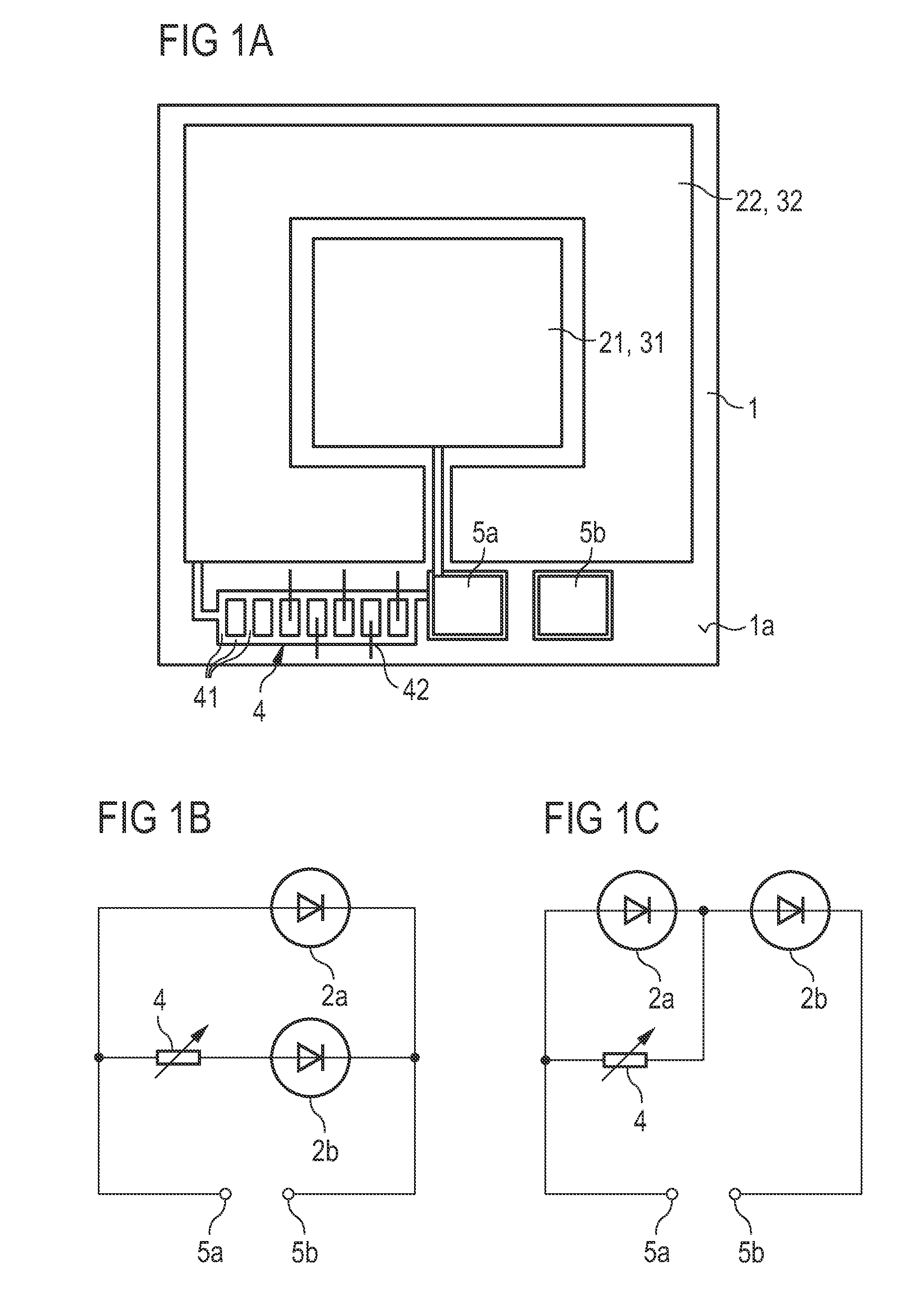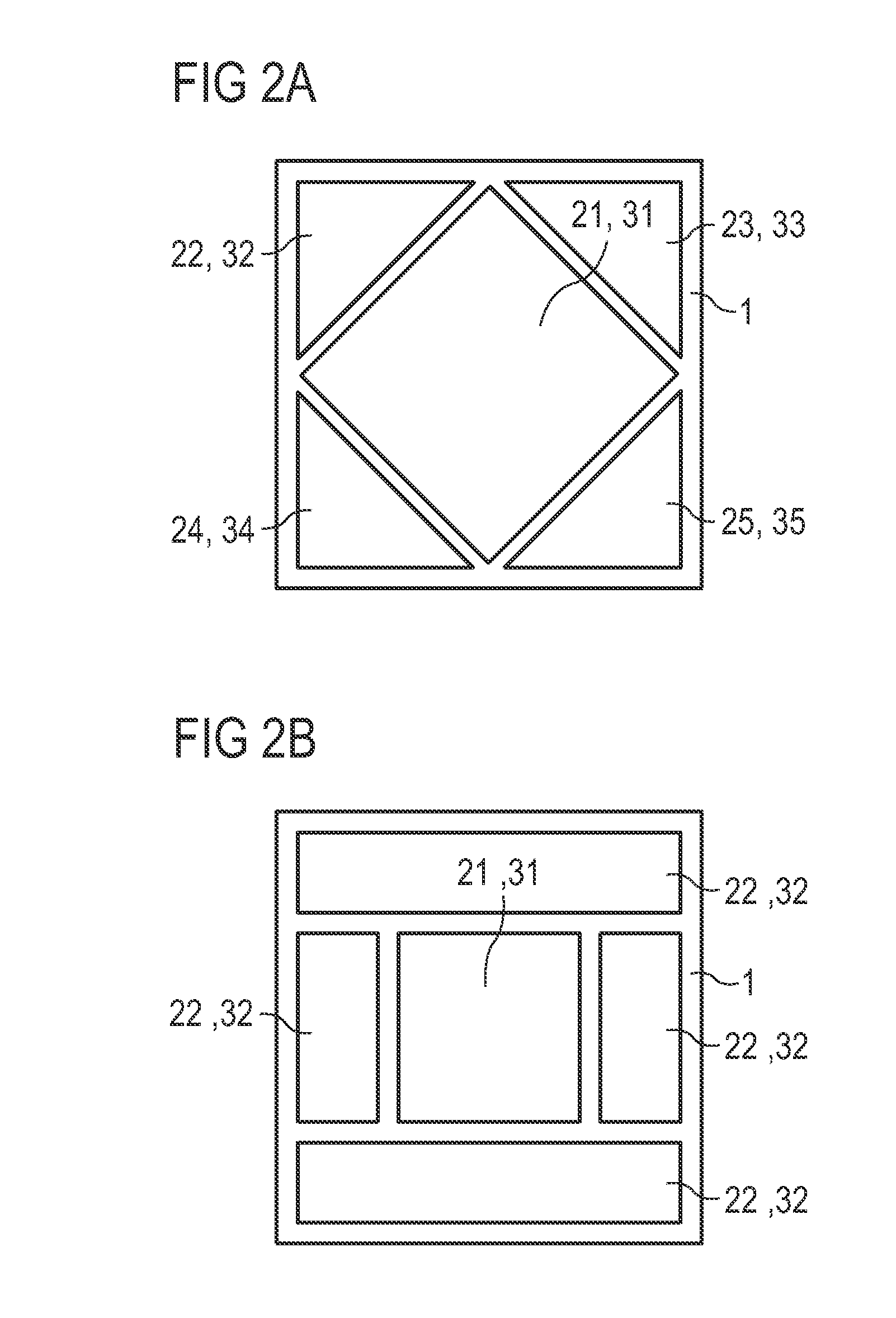Radiation-Emitting Semiconductor Component
a technology of semiconductor components and radiation, applied in the direction of semiconductor devices, basic electric elements, electrical appliances, etc., can solve the problems of unfavorable distribution of the resulting emission color, and achieve the effect of being used particularly efficiently
- Summary
- Abstract
- Description
- Claims
- Application Information
AI Technical Summary
Benefits of technology
Problems solved by technology
Method used
Image
Examples
Embodiment Construction
[0040]FIG. 1A shows a radiation-emitting semiconductor component described here in a schematic plan view.
[0041]The radiation-emitting semiconductor component comprises a light-emitting diode chip 1. In this exemplary embodiment, the light-emitting diode chip 1 has two emission areas 21, 22. The first emission area 21 is arranged centrally in a first main area 1a at the top side of the light-emitting diode chip 1. The first emission area 21 is enclosed in a lateral direction at least in places by the second emission area 22.
[0042]A conversion element 31, 32 is disposed downstream of each emission area, wherein the two conversion elements differ from one another. By way of example, the conversion elements are formed with different thicknesses. During the operation of the light-emitting diode chip 1, mixed light can be emitted from the emission areas 21, 22 at the same times, the mixed light being composed of the respective primary radiation and the respective secondary radiation.
[0043...
PUM
 Login to View More
Login to View More Abstract
Description
Claims
Application Information
 Login to View More
Login to View More - R&D
- Intellectual Property
- Life Sciences
- Materials
- Tech Scout
- Unparalleled Data Quality
- Higher Quality Content
- 60% Fewer Hallucinations
Browse by: Latest US Patents, China's latest patents, Technical Efficacy Thesaurus, Application Domain, Technology Topic, Popular Technical Reports.
© 2025 PatSnap. All rights reserved.Legal|Privacy policy|Modern Slavery Act Transparency Statement|Sitemap|About US| Contact US: help@patsnap.com



